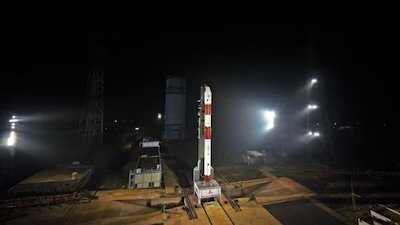TNL Network
In a historic achievement, ISRO successfully placed two spacecraft into low Earth orbit late Monday night as part of its PSLV-C60 mission, marking a critical step in mastering space docking technology. The feat, essential for future interplanetary missions and satellite servicing, positions India on the cusp of joining an elite group of nations capable of in-space docking, alongside the US, Russia, and China.
The 44.5-meter-tall PSLV-C60 rocket lifted off from the First Launch Pad at the Satish Dhawan Space Centre in Sriharikota at 10 p.m., after a 25-hour countdown. Carrying two 220kg spacecraft—SDX01 (the ‘Chaser’) and SDX02 (the ‘Target’)—the rocket soared into orbit, emanating vibrant orange fumes and a thunderous roar.
“This mission marks a significant milestone for ISRO as we progress toward mastering in-space docking technology,” said Mission Director M. Jayakumar. The success is a prelude to ISRO’s ambitious goal of establishing the Bharatiya Antariksh Station, India’s own space station, by 2035.
Over the coming days, scientists will guide the two spacecraft to gradually reduce their relative distance and achieve docking at an altitude of approximately 470 km. The docking will demonstrate ISRO’s ability to synchronize speed and position for merging two spacecraft in orbit—technology crucial for future missions like Chandrayaan-4, lunar sample retrieval, and human space exploration.
“In-space docking enables operational flexibility and enhances mission capabilities, particularly for multi-launch objectives. Through this, India is advancing as a spacefaring nation,” ISRO stated.
This mission is also notable as the first to utilize the PSLV Integration Facility (PIF) at the Satish Dhawan Space Centre, which significantly streamlines rocket assembly.
The PSLV-C60 mission is ISRO’s final launch of 2024, capping off a remarkable year that began with the PSLV-C58/XPOSAT mission on January 1. With this milestone, ISRO continues to solidify its position in the global space arena, driving India toward unprecedented space exploration capabilities.



Recent Comments